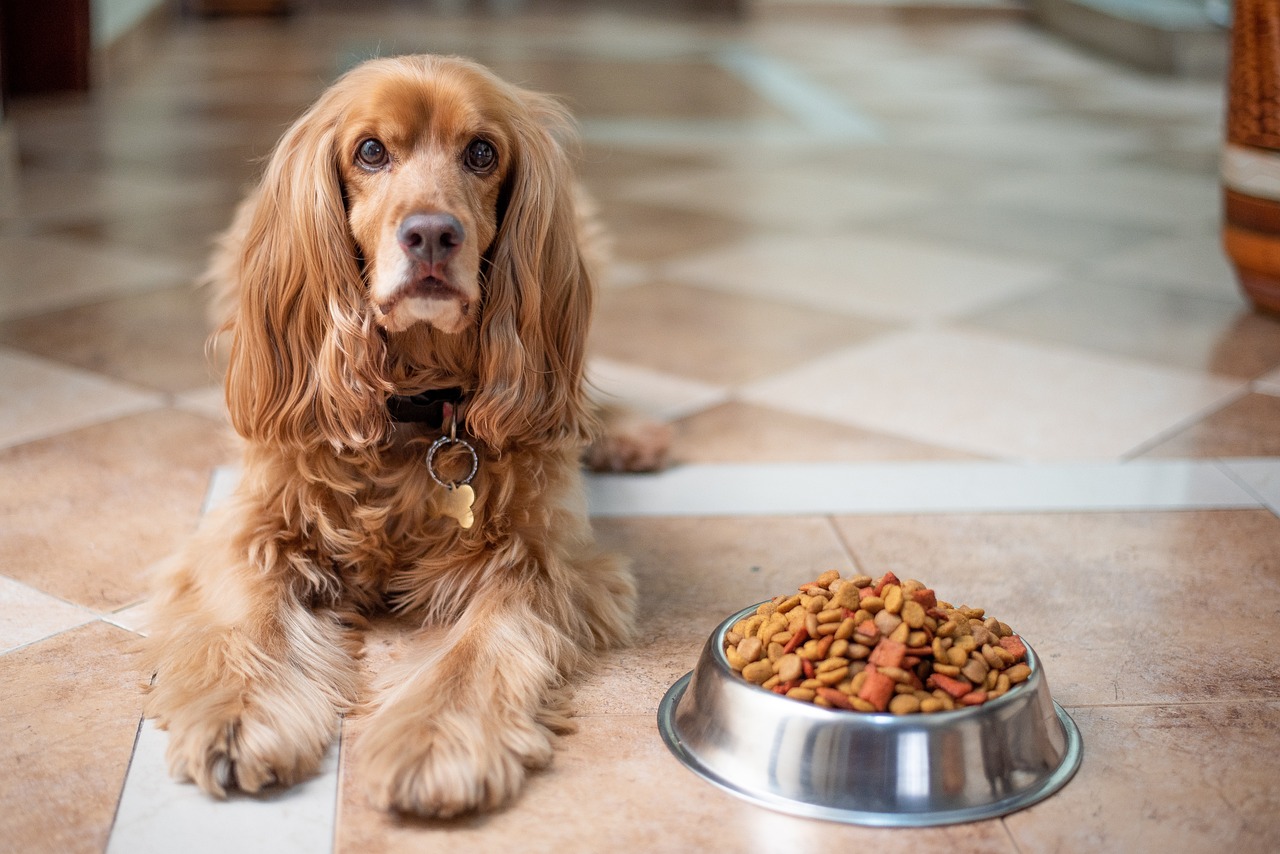As a dog owner, there’s nothing quite as fulfilling as knowing you’re giving your furry friend the very best. One way to show your love is by preparing vet-approved homemade dog food tailored to their specific dietary needs. Not only can homemade meals be fresher and healthier than many commercial options, but they also allow you to control exactly what goes into your dog’s bowl.
But before you put on your apron and start whipping up a gourmet dish for your pup, it’s important to understand that dogs have unique nutritional needs. Their meals must include the right balance of protein, fats, carbohydrates, vitamins, and minerals to keep them healthy. This guide will walk you through everything you need to know about preparing homemade dog food that’s both vet-approved and delicious for your dog.
Table of Contents
Why Consider Homemade Dog Food?
The idea of homemade dog food has become increasingly popular in recent years. With pet owners paying more attention to ingredient lists and wanting to avoid additives and fillers in commercial dog food, preparing meals at home offers a sense of control and customization. Here’s why you might want to consider it:
1. Customized Nutrition
Every dog is unique. Factors like age, breed, size, activity level, and health conditions influence their dietary requirements. Homemade dog food allows you to tailor meals specifically to your pet’s needs, ensuring they get the right nutrients.
2. High-Quality Ingredients
When you make your dog’s food, you choose the ingredients. This means you can use high-quality, fresh, and organic options free from artificial preservatives, fillers, or byproducts.
3. Allergy and Sensitivity Management
If your dog has food allergies or sensitivities, homemade meals make it easier to avoid trigger ingredients. You can create hypoallergenic recipes that cater to their needs.
4. Improved Taste
Let’s face it: fresh, homemade food simply tastes better. Many dogs find homemade meals more palatable, which can be especially helpful for picky eaters.
5. Strengthening the Bond
Cooking for your dog is an act of love that strengthens the bond between you. Watching them enjoy a meal you prepared just for them is incredibly rewarding.
Understanding Your Dog’s Nutritional Needs
Before you start cooking, it’s essential to understand what makes a balanced diet for dogs. According to veterinary nutritionists, a complete and balanced meal for a dog typically includes the following components:
1. Protein (40-60% of the Meal)
Protein is the foundation of a dog’s diet. It helps build and repair tissues, supports a healthy coat, and provides energy. Common sources include:
- Lean meats (chicken, turkey, beef)
- Fish (salmon, sardines)
- Eggs
2. Fats (10-20%)
Healthy fats are crucial for energy, skin, and coat health. Include fats like:
- Fish oil (rich in omega-3s)
- Coconut oil
- Chicken fat or turkey fat
3. Carbohydrates (20-30%)
Carbs provide energy and fiber for digestive health. Choose digestible options like:
- Brown rice
- Quinoa
- Sweet potatoes
4. Vegetables (10%)
Vegetables provide essential vitamins, minerals, and fiber. Some great dog-friendly vegetables are:
- Carrots
- Spinach
- Green beans
- Pumpkin
5. Essential Vitamins and Minerals
Your dog needs a range of vitamins and minerals to support immune health, bone development, and overall well-being. Adding supplements like calcium powder, multivitamins, or veterinary-approved supplements ensures your dog gets what they need.
6. Water
Always ensure your dog has access to fresh water. Even though food contains moisture, hydration is vital for digestion, joint health, and overall body function.
Common Vet-Approved Homemade Dog Food Recipes
Now that we’ve covered the basics of canine nutrition, let’s dive into a few simple, vet-approved recipes you can prepare at home.
1. Chicken and Rice Recipe (Perfect for Sensitive Stomachs)
This classic recipe is easy on the stomach and ideal for dogs with digestive issues.
Ingredients:
- 1 lb lean ground chicken
- 2 cups cooked white rice (or brown rice for added fiber)
- 1 cup steamed carrots (diced)
- 1 cup steamed green beans (chopped)
- 1 tsp fish oil
Instructions:
- Cook the ground chicken in a skillet over medium heat until fully cooked.
- Steam the carrots and green beans until tender.
- Mix the cooked chicken, rice, and vegetables in a large bowl.
- Add the fish oil for added omega-3 fatty acids.
- Let the mixture cool before serving.
2. Turkey and Sweet Potato Stew
This hearty meal is packed with protein and healthy carbs, making it perfect for active dogs.
Ingredients:
- 1 lb ground turkey
- 1 medium sweet potato (cubed)
- 1 cup spinach (chopped)
- 1 cup cooked quinoa
- 1 tbsp olive oil
Instructions:
- Cook the ground turkey in a pan until browned.
- Boil the sweet potato cubes until soft.
- In a large bowl, mix the cooked turkey, sweet potato, spinach, and quinoa.
- Drizzle with olive oil for added healthy fats.
- Allow the food to cool before serving.
3. Fish and Veggie Medley
This recipe is rich in omega-3 fatty acids, which are excellent for your dog’s skin and coat.
Ingredients:
- 1 lb salmon fillet (boneless, skinless)
- 1 cup steamed broccoli (chopped)
- 1 cup cooked brown rice
- 1 tbsp flaxseed oil
Instructions:
- Bake the salmon at 375°F (190°C) until fully cooked (about 15-20 minutes).
- Steam the broccoli until tender.
- Combine the salmon, rice, and broccoli in a large bowl.
- Add flaxseed oil for an extra omega-3 boost.
- Serve once cooled.
Tips for Making Vet-Approved Homemade Dog Food
- Consult Your Vet: Before switching your dog to a homemade diet, consult your veterinarian or a certified pet nutritionist to ensure the recipes meet your dog’s specific needs.
- Use Fresh, High-Quality Ingredients: Always choose fresh, whole foods, and avoid anything that’s spoiled or overly processed.
- Avoid Harmful Foods: Some foods are toxic to dogs, including onions, garlic, chocolate, grapes, raisins, and macadamia nuts. Avoid these at all costs.
- Prepare in Bulk: Save time by cooking large batches of food and freezing portion-sized servings for later use.
- Include Supplements: Homemade meals often lack certain nutrients found in commercial dog food, so it’s essential to include vet-recommended supplements like calcium or fish oil.
- Transition Slowly: When introducing homemade food, do so gradually to prevent digestive upset. Start by mixing it with your dog’s regular food and increase the proportion of homemade food over 7-10 days.
- Monitor Your Dog’s Health: Keep an eye on your dog’s weight, coat condition, energy levels, and overall health. If you notice any changes, consult your vet and adjust their diet accordingly.
Homemade vs. Commercial Dog Food
While commercial dog food is convenient and often nutritionally balanced, it’s not without its drawbacks. Many store-bought options contain fillers, artificial additives, and preservatives. Homemade dog food, on the other hand, offers the following advantages:
- Transparency: You know exactly what your dog is eating.
- Customization: Meals can be tailored to your dog’s unique needs.
- Higher Quality: Fresh, whole ingredients ensure better nutrition.
However, homemade meals do require more effort, time, and planning. For some pet owners, a combination of high-quality commercial food and homemade meals may strike the perfect balance.
Frequently Asked Questions
1. Can I feed my dog homemade food every day?
Yes, as long as the meals are nutritionally balanced and approved by a vet or pet nutritionist.
2. How do I ensure my dog gets enough calcium?
You can add calcium supplements, ground eggshells, or bone meal to homemade meals.
3. Is raw food better than cooked food?
Raw diets are popular but can pose risks like bacterial contamination. Cooked food is safer and easier to digest for most dogs.
4. Can I include fruits in homemade dog food?
Yes, fruits like apples (seedless), blueberries, and bananas make great treats but should be given in moderation.
5. How do I store homemade dog food?
Refrigerate homemade food for up to 3 days or freeze portions for up to 3 months.
Final Thoughts
Homemade dog food can be a wonderful way to ensure your dog gets fresh, nutritious meals that cater to their specific needs.
With the right planning and guidance, you can create vet-approved recipes that support their health, energy, and happiness. Just remember to consult your vet, use high-quality ingredients, and monitor your dog’s well-being to make the transition to homemade meals as smooth as possible.
Ready to start crafting healthy, homemade meals your dog will love? Take the first step by consulting your vet to ensure your recipes are nutritionally balanced and tailored to your dog’s specific needs.
Explore simple, vet-approved recipes and stock up on high-quality, dog-safe ingredients to get started. Your pup deserves the best, and with a little effort, you can make mealtime a delicious and nourishing experience. Start today and see the difference homemade meals can make in your dog’s health and happiness!





